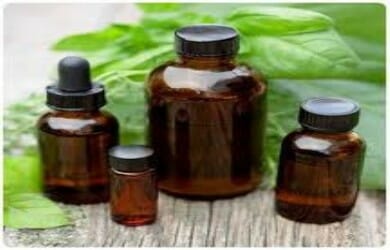
These skin creams manufactured in other countries are among the products found in recent years to contain mercury. Get hi-res images of these productson Flickr.
Signs and Symptoms of Mercury Poisoning
- irritability
- shyness
- tremors
- changes in vision or hearing
- memory problems
- depression
- numbness and tingling in hands, feet or around mouth
Source: Agency for Toxic Substances and Disease Registry
Federal health officials are warning consumers not to use skin creams, beauty and antiseptic soaps, or lotions that might contain mercury.
The products are marketed as skin lighteners and anti-aging treatments that remove age spots, freckles, blemishes and wrinkles, says Gary Coody, national health fraud coordinator in the Food and Drug Administration’s Office of Regulatory Affairs. Adolescents also may use these products as acne treatments, adds Coody. Products with this toxic metal have been found in at least seven states.
The products are manufactured abroad and sold illegally in the United States—often in shops in Latino, Asian, African or Middle Eastern neighborhoods and online. Consumers may also have bought them in another country and brought them back to the U.S. for personal use.
“If you have a product that matches these descriptions (and others listed below), stop using it immediately,” says Coody.
“Even though these products are promoted as cosmetics, they also may be unapproved new drugs under the law,” says Linda Katz, M.D., director of FDA’s Office of Cosmetics and Colors. FDA does not allow mercury in drugs or in cosmetics, except under very specific conditions, which these products do not meet.
“Sellers and distributors should not market these illegal products and may be subject to enforcement action, which could include seizure of the products and other legal sanctions,” says attorney Brad Pace, J.D., of the Heath Fraud and Consumer Outreach Branch within FDA’s Center for Drug Evaluation and Research
Dangers of Mercury
“Exposure to mercury can have serious health consequences,” says Charles Lee, M.D., a senior medical advisor at FDA. “It can damage the kidneys and the nervous system, and interfere with the development of the brain in unborn children and very young children.”
You don’t have to use the product yourself to be affected, says FDA toxicologist Mike Bolger, Ph.D. “People—particularly children—can get mercury in their bodies from breathing in mercury vapors if a member of the household uses a skin cream containing mercury.” Infants and small children can ingest mercury if they touch their parents who have used these products, get cream on their hands and then put their hands and fingers into their mouth, which they are prone to do, adds Bolger.
How to Protect Yourself
- Check the label of any skin lightening, anti-aging or other skin product you use. If you see the words “mercurous chloride,” “calomel,” “mercuric,” “mercurio,” or “mercury,” stop using the product immediately.
- If there is no label or no ingredients are listed, do not use the product. Federal law requires that ingredients be listed on the label of any cosmetic or drug.
- Don’t use products labeled in languages other than English unless English labeling is also provided.
- If you suspect you have been using a product with mercury, stop using it immediately. Thoroughly wash your hands and any other parts of your body that have come in contact with the product. Contact your health care professional or a medical care clinic for advice.
- If you have questions, call your health care professional or the Poison Center at 1-800-222-1222; it is open 24 hours a day.
- Before throwing out a product that may contain mercury, seal it in a plastic bag or leak-proof container. Check with your local environmental, health or solid waste agency for disposal instructions. Some communities have special collections or other options for disposing of household hazardous waste
Tracking Skin Products Containing Mercury
Investigations in the past few years by FDA and state health officials have turned up more than 35 products that contain unacceptable levels of mercury. FDA continues to add mercury-containing skin products to its import alerts, which authorize the agency’s field staff to refuse admission of shipments of these products.
But this is only a partial solution, says Coody. “Many of these products are coming into the country through channels we can’t easily track, such as international mail and personal baggage. That’s why it’s so important for consumers and sellers to know about the dangers of possible mercury poisoning associated with the use of these skin products.”
Texas health officials say samples of face cream they tested contained mercury up to 131,000 times the allowable level. And a teenager in southern Texas who used a mercury-containing skin cream was recently hospitalized for mercury poisoning.
In Northern California, a 39-year old woman had more than 100 times the average amount of mercury in her urine and had symptoms of mercury poisoning, according to the California Department of Public Health. For three years, the woman and her husband had been using an unlabeled mercury-containing face cream that was brought into the U.S. from Mexico by a relative. Several other family members who did not use the cream, including a four-year-old child, also had elevated levels of mercury in their bodies.
Virginia, Maryland, and New York have also seen cases of elevated mercury levels in people exposed to skin products containing mercury. In Minnesota, 11 of 27 imported skin products taken from store shelves contained mercury . Photos of some illegal mercury-containing products are shown here










